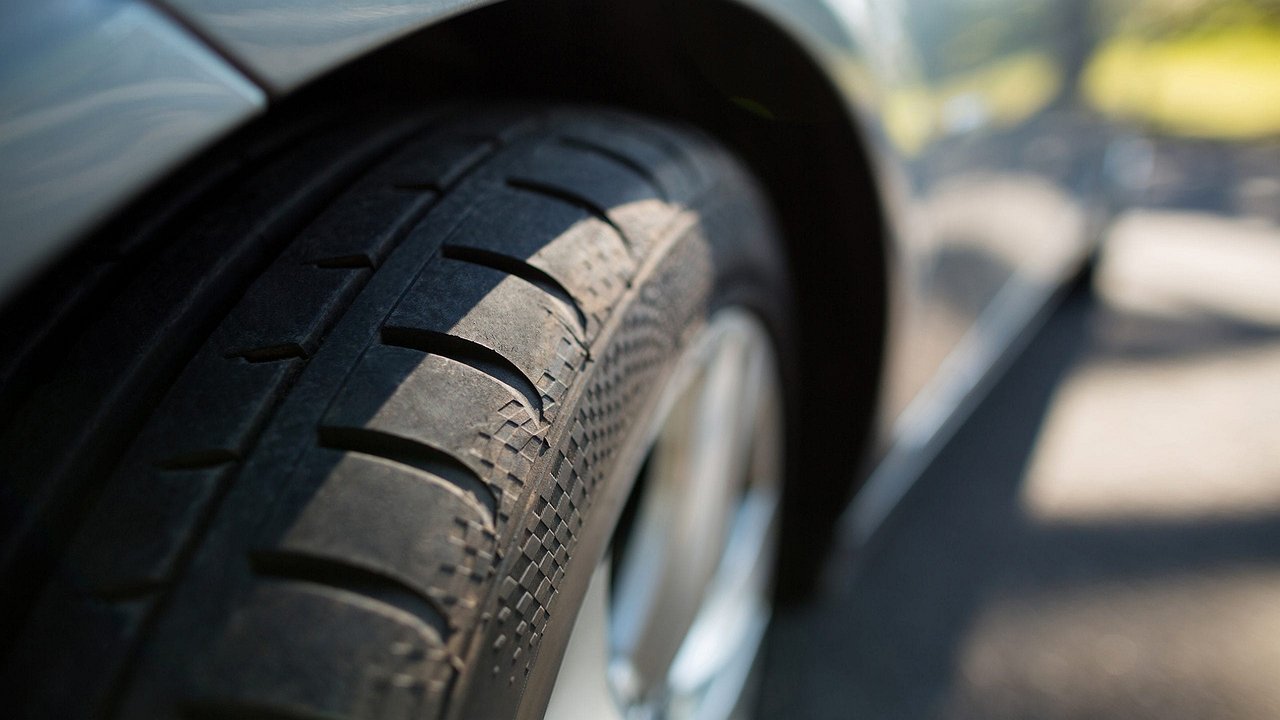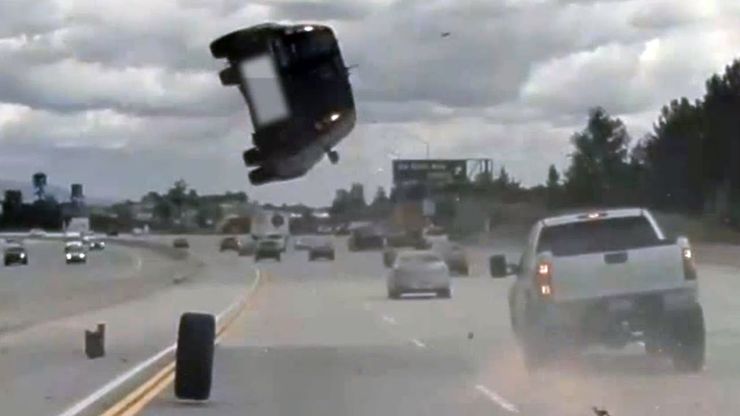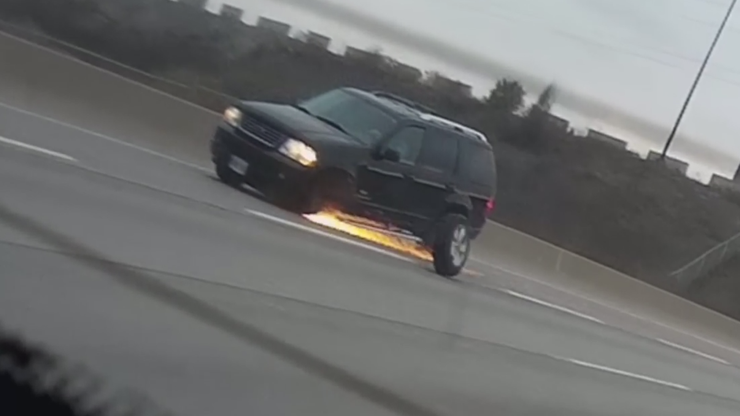3 reasons why a wheel can come off while driving
- April 10, 2023
- 0
Disconnecting a wheel on the road, riding or driving, always leads to very, very serious consequences. Until deadly. To “catch” such a car, not to fly into a
Disconnecting a wheel on the road, riding or driving, always leads to very, very serious consequences. Until deadly. To “catch” such a car, not to fly into a

It is believed that the main reason for the separation of the wheel from the suspension is the total destruction of the ball. Like, the ball pops out, the wheel breaks off along with the hub, the car and the disc start an independent and independent life. However, there is one “but” – the ball usually falls off at the moment of the maneuver, when the steering wheel is turned sharply. This happens when turning or parking, when the speed is not high. Or the pit should be downright impressive.
However, the wheels come off both on a straight line and at exorbitant speedometer readings. Why is this happening? The real “culprit” is fasteners: bolts, nuts and studs. This is where the “devil” lies, as well as the three main reasons why the wheel can “unhook” from the hub along the way.
It’s worth starting with the standard factory equipment. Wheel fasteners are hardened as standard, i.e. it is incredibly difficult to strip the thread. But hardening, as you know, has a downside – the metal becomes brittle. And if, when mounting the tire, the master grabs the crank with the pipe – write wasted, then the hairpin will simply burst. And this is at best, because at worst it will only burst and fall apart later, along the way.
No matter how much you write in the manuals, or stick your nose in the regulations, things are still there: tightening wheel nuts and bolts must be done with the effort prescribed by the manufacturer. That is why a torque wrench is an indispensable tool when removing and installing a wheel.
The second reason is the other side of the coin than the first. Insufficient bolts regularly lead to the wheels being unscrewed along the way. The consequences can be seen on the Internet: a lot of videos have been collected on this topic, but in reality this is a very frightening situation. Before the wheel falls off, the car loses control, scrapes the road even at low speed and tries to crash into a neighbor or drive into a ditch, despite the best efforts of the driver.
If you feel such behavior, you should immediately stop – and it doesn’t matter if there are roadsides or special “pockets” for rest. If you’re lucky, the mate will identify the problem if the studs haven’t been cut yet – then the lack of fasteners can be compensated by “using” other wheels. And already in this form, carefully and slowly drive to the tire assembly, where the master will stretch all the bolts and provide the missing fasteners.
The third point is for young and early. Among novice tuners, there are many supporters of fashionable lug nuts that glitter in the sun and demonstrate to others the cool disposition of the car owner. The problem is that the metal composition of such fasteners is unknown, since in four out of four cases it was purchased from a Chinese flea market. And then – as in Krylov’s fable: a hardened bolt, a raw metal nut, a sharp start with an inverted steering wheel and a monstrous load on the hub. Even an academic will not calculate the trajectory of the further movement of the car. In a literal and figurative sense.
Wheel attachments are a guarantee of road safety. In addition, every aspect matters: the quality of the parts, their age and damage, tightening, compatibility with the wheel disc currently standing, and much more. The condition of the nut and bolt is so important that you should periodically inspect and check it yourself: is the wheel attachment tight or is it already loose? Then the chance of a tragic outcome is reduced to a minimum.


It is believed that the main reason for the separation of the wheel from the suspension is the total destruction of the ball. Like, the ball pops out, the wheel breaks off along with the hub, the car and the disc start an independent and independent life. However, there is one “but” – the ball usually falls off at the moment of the maneuver, when the steering wheel is turned sharply. This happens when turning or parking, when the speed is not high. Or the pit should be downright impressive.
However, the wheels come off both on a straight line and at exorbitant speedometer readings. Why is this happening? The real “culprit” is fasteners: bolts, nuts and studs. This is where the “devil” lies, as well as the three main reasons why the wheel can “unhook” from the hub along the way.
It’s worth starting with the standard factory equipment. Wheel fasteners are hardened as standard, i.e. it is incredibly difficult to strip the thread. But hardening, as you know, has a downside – the metal becomes brittle. And if, when mounting the tire, the master grabs the crank with the pipe – write wasted, then the hairpin will simply burst. And this is at best, because at worst it will only burst and fall apart later, along the way.
No matter how much you write in the manuals, or stick your nose in the regulations, things are still there: tightening wheel nuts and bolts must be done with the effort prescribed by the manufacturer. That is why a torque wrench is an indispensable tool when removing and installing a wheel.
The second reason is the other side of the coin than the first. Insufficient bolts regularly lead to the wheels being unscrewed along the way. The consequences can be seen on the Internet: a lot of videos have been collected on this topic, but in reality this is a very frightening situation. Before the wheel falls off, the car loses control, scrapes the road even at low speed and tries to crash into a neighbor or drive into a ditch, despite the best efforts of the driver.
If you feel such behavior, you should immediately stop – and it doesn’t matter if there are roadsides or special “pockets” for rest. If you’re lucky, the mate will identify the problem if the studs haven’t been cut yet – then the lack of fasteners can be compensated by “using” other wheels. And already in this form, carefully and slowly drive to the tire assembly, where the master will stretch all the bolts and provide the missing fasteners.
The third point is for young and early. Among novice tuners there are many supporters of fashionable lug nuts that glitter in the sun and demonstrate to others the cool disposition of the car owner. The problem is that the metal composition of such fasteners is unknown, since in four out of four cases it was purchased from a Chinese flea market. And then – as in Krylov’s fable: a hardened bolt, a raw metal nut, a sharp start with an inverted steering wheel and a monstrous load on the hub. Even an academic will not calculate the trajectory of the further movement of the car. In a literal and figurative sense.
Wheel attachments are a guarantee of road safety. In addition, every aspect matters: the quality of the parts, their age and damage, tightening, compatibility with the wheel disc currently standing, and much more. The condition of the nut and bolt is so important that you should periodically inspect and check it yourself: is the wheel attachment tight or is it already loose? Then the chance of a tragic outcome is reduced to a minimum.
Source: Avto Vzglyad
Donald Salinas is an experienced automobile journalist and writer for Div Bracket. He brings his readers the latest news and developments from the world of automobiles, offering a unique and knowledgeable perspective on the latest trends and innovations in the automotive industry.